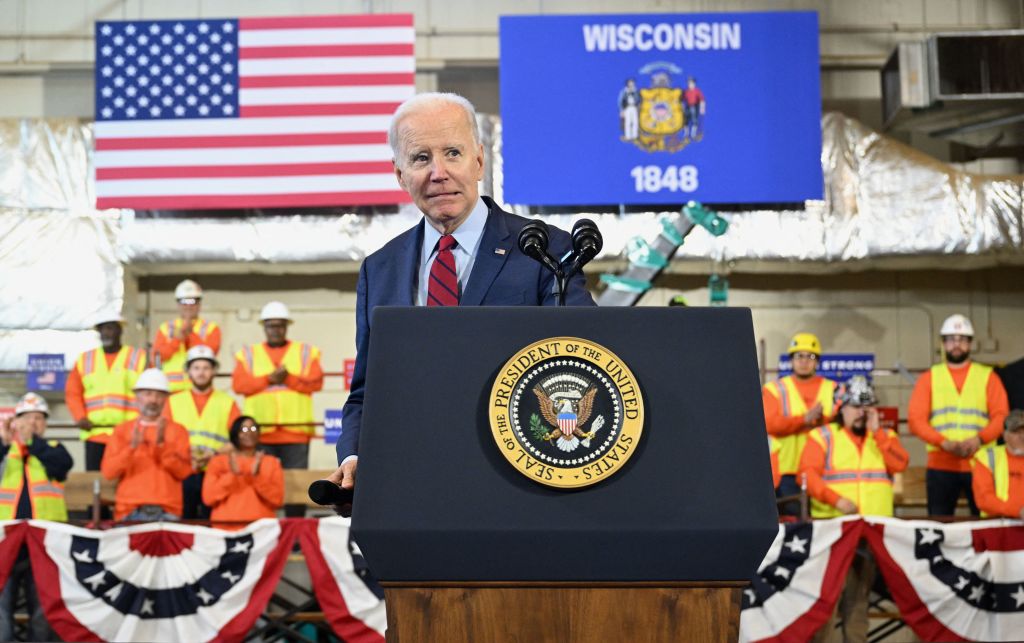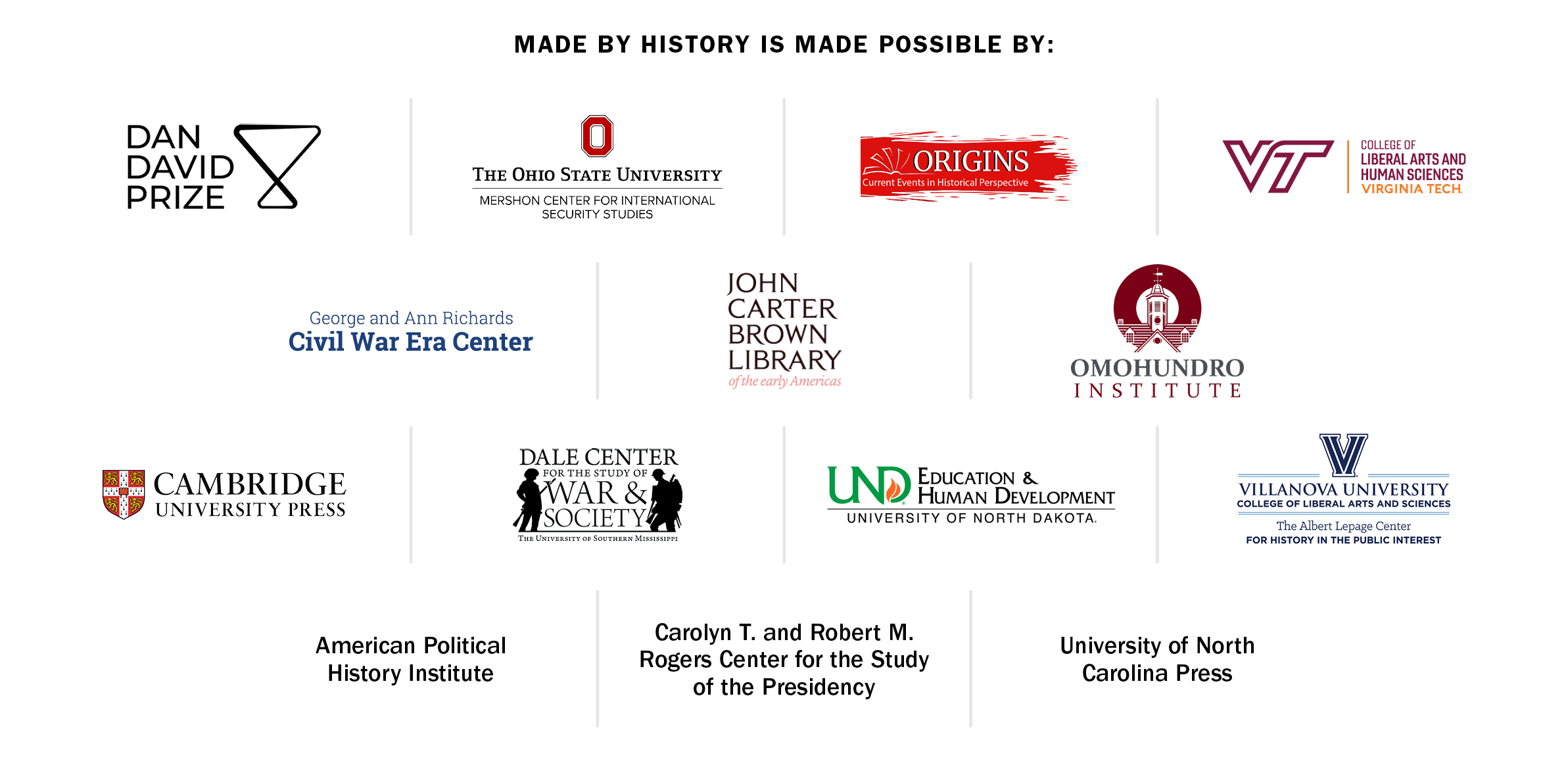
Whiter, less affluent communities in the industrial heartland of America — where residents are less likely to have a college degree — remain loyal to Donald Trump, seven years after they first helped deliver him the presidency. Many of these places are located in the handful of swing states that will determine the outcome of the 2024 election and the fate of American politics for the foreseeable future — notably Michigan, Pennsylvania, and Wisconsin. Understanding the history of these communities not only explains how they became Trump country, but also how their politics might continue to shift in the years to come.
In particular, history shows that the strength of labor activism in a community directly correlates with its support for the Democratic Party over time. Labor organizing brought the Democratic Party’s message to workers in cities in the heartland in the 1930s and 1940s, and labor’s uneven decline as an economic and political force explains why many of these towns have lurched toward Trumpism — even as some remain resistant to the former president's message.
President Franklin D. Roosevelt courted industrial workers hurt by the Great Depression with enormous success. He encouraged them to see the Democratic Party as the political vehicle to solve their problems and it worked: according to a 1940 survey of Erie County, Ohio — an industrial town — a majority of voters thought that Roosevelt represented the “common people.”
The Wagner Act, passed in 1935, was central to Roosevelt’s pitch. The law gave industrial workers the right to organize, made it illegal for employers to refuse to bargain collectively, and established the National Labor Relations Board (NLRB) to adjudicate disputes between workers and management. The Wagner Act helped revitalize a labor movement that had stagnated during the 1920s.
Read More: The Longest Strike in U.S. History
In response, organized labor, particularly unions affiliated with the newly established Congress of Industrial Organizations (CIO), supported Roosevelt and helped spread the message that Democrats were the friends of workers.
The symbiotic relationship between organized labor and the New Deal administration that blossomed is evident in the history of three midwestern towns that I visited — one in Wisconsin, one Minnesota, and one in Indiana. In the Wisconsin town, a decades-long history of labor and socialist organizing had waned during the 1920s, but workers were able to revive these organizations during the New Deal, as one labor leader later recalled. And in the other towns, active labor movements emerged and consolidated for the first time in the 1930s, in part aided directly by the Wagner Act. In the Minnesota town, for example, management at the city’s largest plant sought to discourage unionization by establishing a company-run “employees’ association,” which the NLRB ruled illegal. Workers subsequently voted to join a CIO-affiliated union.
The influence of organized labor and its support for the Democratic Party explained why these three towns — and others like them in places across the industrial Midwest — remained a crucial part of the New Deal coalition through the 1950s.
But that began to change during the 1960s and 1970s as race and religion moved to the center of American politics in new ways.
First, Civil Rights — especially the Civil Rights Act (CRA) and the Voting Rights Act — accelerated a partisan realignment along racial lines that dated to the 1940s when Northern Black voters began shifting to the Democratic Party. In the 1960s, even as Black voters continued this migration, white voters, especially in the South, gravitated toward the GOP. That was especially true after the 1964 election, which pitted Democratic President Lyndon B. Johnson, who signed the CRA, against Republican Senator Barry Goldwater, who voted against it.
Then, in the 1970s, white Christians began mobilizing around sex education, school prayer, opposition to the Equal Rights Amendment, abortion, and tax exemptions for Christian schools. The Republican Party ultimately endorsed a constitutional amendment to ban abortion in 1976. Meanwhile, from 1972 onward the Democratic Party slowly embraced feminist goals, including support for legal abortion in 1976. These changes alienated many Catholic and evangelical Democrats and established the GOP as the political home of white Christian conservatives.
By 1980, Republicans had moved to fully embrace social conservatism in an effort to court religious white voters of all denominations. As then presidential-candidate Ronald Reagan told an officially non-partisan event full of conservative evangelicals in 1980, “you can’t [legally] endorse me, but I want you to know that I endorse you!”
Simultaneously, the American economy was shifting rapidly. Beginning in the 1970s, companies began outsourcing supply chains as U.S. economic growth stagnated and inflation rose. That led the number of manufacturing jobs to plunge. Manufacturing employees went from a post-World War II high of 26% of non-farm employees in 1970 to 13% by 2000.
Shuttered factories combined with decades of relentless conservative attacks on organized labor caused union membership to decline precipitously. Unionization peaked at 25% in 1954 and had fallen to 20.9% by 1980.
The rising roles of religion and race in politics, combined with the decline of unions, created new cross-pressures on white, working-class voters, particularly Christians. Voting Democratic had been an easy choice when politics was all about class identity. But now, the parties were competing along the lines of race, religion, gender, and sexuality as well, just as the greatest tie between the Democratic Party and white working-class people — unions — began to wane.
The result, by the early 2000s, was that 79% of the original white, working-class New Deal counties had peeled away from the coalition. By 2016, only 4% voted reliably Democratic.
The Wisconsin town I visited is among that 4%. The Indiana and Minnesota towns are part of the 96%: the Indiana town began voting for Republican presidential candidates in 1968, and over time the GOP came to dominate all levels of office; the Minnesota town’s residents remained split between Democrats and Republicans for decades, but swung to the right in 2016.
Local characteristics explain their different paths. The Indiana town was distinctly susceptible to the pulls of the racial realignment and politicization of evangelical Christianity: it had a history of segregationist practices that persisted into the 1960s, and by the 1980s its labor movement had all but disappeared. Meanwhile, its local churches — first Catholic and later evangelical — had begun coordinating an anti-abortion movement. Dating back to the 1900s, the Indiana town had had more evangelical churches than the Minnesota or Wisconsin towns, but it only began to matter after the politicization of conservative religion in the 1970s.
This experience epitomized the story of New Deal counties that moved into the Republican coalition by the end of the 20th century.
Read More: Democrats Need Rural Voters. Can They Win Them Over by Fixing Rural Healthcare?
But both the Wisconsin and Minnesota towns resisted this pull into the 2000s. Unlike the Indiana town, both cities lacked evangelical churches and retained organized labor movements through the 1990s: local newspapers recorded 56 strikes in the Wisconsin town between 1940 and 1990, and 11 in the Minnesota town, including two that drew the whole town to a standstill.
By 2016, however, the Minnesota town’s politics had changed. Because it was a company town, the bankruptcy of the city’s largest employer in the 1970s, followed by its ultimate demise in a fire in the late 1990s, decimated the town’s labor movement. The decline of local industry alongside the lack of labor as a bulwark made voters susceptible to a Trumpian message warning of socialism and immigration as existential threats to just this sort of town.
The paths of the Indiana and Minnesota towns help explain why the Wisconsin town’s ongoing support for Democrats is so rare among white, working-class New Deal counties. Even as organized labor began declining across the industrial Heartland, the town’s unions continued to engage in both workplace and political activism, not only striking but also endorsing candidates for local office who ran on labor platforms. Unlike the Minnesota town, the city was never overly dependent on one employer, and several union shops from the 1950s remain in business today. That core of private sector unions, joined later by growing activism in local public sector unions, sustained the city’s labor movement even amid former Wisconsin Governor Scott Walker’s attacks on unions in the 2010s.
The combination created the rare Heartland community that resisted the pull to the right that lured residents of the white working-class towns that were once the bedrock of the New Deal coalition.

And this history also reveals why Democrats face such a daunting task in trying to staunch their bleeding in these sorts of industrial towns. It’s much easier to support the labor movement where it is struggling — as in the Wisconsin and Minnesota towns — than it is to revive a movement that died decades ago — as in the Indiana one.
This sobering reality means that those places with remnants of an organized labor movement are the Democrats’ best chance for bringing some of these Trump counties back into their coalition — which may be crucial to reelecting President Biden and continuing to have success in the years to come.
Stephanie Ternullo is assistant professor of government at Harvard University. She is the author of How the Heartland Went Red: Why Local Forces Matter in an Age of Nationalized Politics.
Made by History takes readers beyond the headlines with articles written and edited by professional historians. Learn more about Made by History at TIME here. Opinions expressed do not necessarily reflect the views of TIME editors.
More Must-Reads from TIME
- Cybersecurity Experts Are Sounding the Alarm on DOGE
- Meet the 2025 Women of the Year
- The Harsh Truth About Disability Inclusion
- Why Do More Young Adults Have Cancer?
- Colman Domingo Leads With Radical Love
- How to Get Better at Doing Things Alone
- Michelle Zauner Stares Down the Darkness
Write to Stephanie Ternullo / Made by History at madebyhistory@time.com
